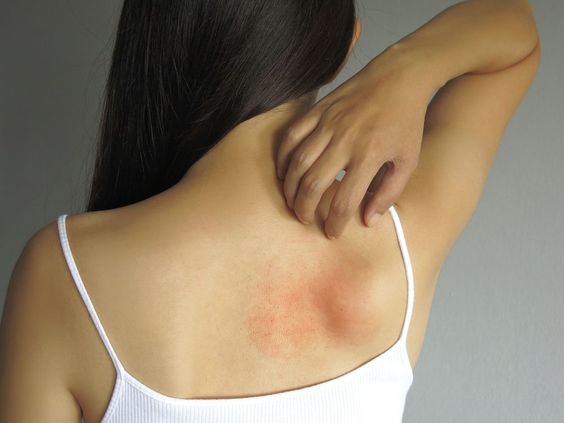Introduction:
Prickly heat, also known as heat rash, is a common skin condition that occurs when sweat ducts become blocked, trapping perspiration under the skin. This can lead to small, itchy, and often prickly bumps or blisters. While it can affect anyone, prickly heat is particularly common in infants and young children due to their less developed sweat glands. It is also more likely to occur in hot, humid weather conditions.

Prickly heat is generally a harmless condition that clears up on its own within a few days. However, the intense itching and discomfort can be bothersome. Understanding the causes, symptoms, and treatment options can help you effectively manage and prevent prickly heat. This article aims to provide valuable insights into dealing with prickly heat rash, offering practical tips for relief and prevention.
Recognizing the Symptoms of Prickly Heat
Prickly heat typically presents as small, red bumps or blisters on areas of the skin covered by clothing, such as the back, chest, neck, groin, and armpits. These bumps may be filled with clear fluid or appear as pus-filled pimples. The affected area may feel itchy, prickly, or have a burning sensation. In some cases, the rash may be accompanied by mild swelling and inflammation.
Effective Tips for Relief and Prevention
Dealing with prickly heat involves a combination of home remedies and preventive measures:
- Keep Cool and Dry: Avoid hot, humid environments and opt for loose-fitting, breathable clothing made from natural fibers like cotton.
- Cool Compresses: Applying cool compresses or taking cool showers can help soothe the itch and reduce inflammation.
- Calamine Lotion: Calamine lotion can provide a soothing effect and help dry out the rash.
- Over-the-Counter Remedies: Hydrocortisone cream or antihistamines can alleviate itching and discomfort.
- Avoid Irritants: Avoid using harsh soaps, lotions, or perfumes on affected areas, as these can further irritate the skin.
- Stay Hydrated: Drink plenty of water to stay hydrated and support healthy sweat gland function.
When to Seek Medical Advice
While prickly heat is generally harmless, it's essential to consult a healthcare professional if:
- Symptoms are severe or do not improve within a few days.
- There are signs of infection, such as increased pain, redness, swelling, or pus drainage.
- You experience fever or other concerning symptoms.

.jpg)